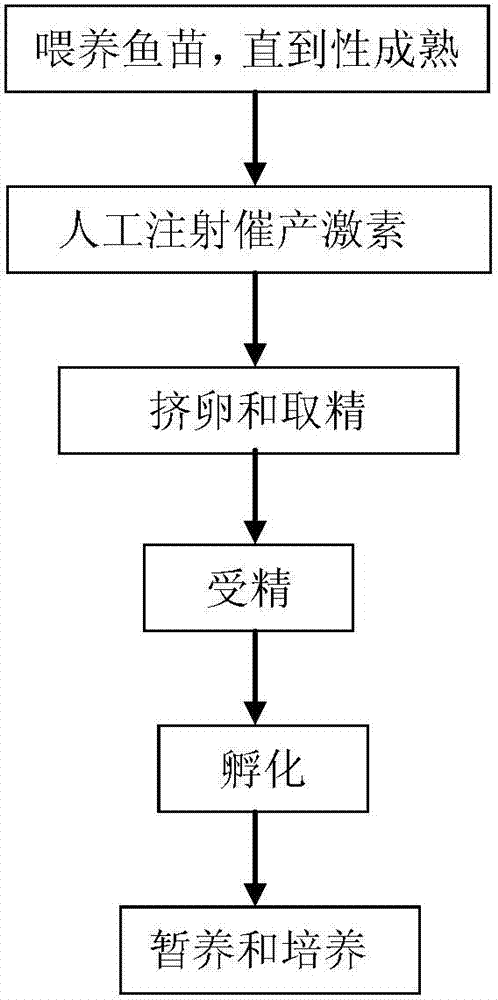Artificial propagation method for mystus macropterus
A technology of artificial breeding and large-finned beetle, applied in fish farming, application, climate change adaptation, etc., to achieve the effect of simple and convenient feeding
- Summary
- Abstract
- Description
- Claims
- Application Information
AI Technical Summary
Problems solved by technology
Method used
Image
Examples
Embodiment 1
[0032] combine figure 1 Shown, following is an embodiment of the present invention:
[0033] 1) Feeding bigfin fish fry until they reach sexual maturity
[0034] If it is a wild big fin carp, feeding and domestication is also required. In this process, the fry are soaked in 1.5-2% salt water for 3-5 minutes and then put into the pond, and fed with water worms 5-15 days before entering the pond. After 15 days, its fry were fed with the soft pellets of 40% (weight) protein content processed together with fresh surimi and powder, and the daily feeding amount was 2% of body weight. When the water temperature is lower than 18 degrees, gradually reduce the amount of feeding, and do not feed below 12 degrees. The fed fish ponds are flushed regularly every day, and the water is changed regularly every month to ensure good water quality. At the same time, the aerator is turned on regularly every day to ensure that the broodstock is not hypoxic. Feed in this way until the ovary of ...
Embodiment 2
[0049] In this embodiment, different from 1) to 6) of Embodiment 1, in step 5), the fertilized eggs are placed in the hatching bucket for hatching under running water.
PUM
 Login to View More
Login to View More Abstract
Description
Claims
Application Information
 Login to View More
Login to View More - R&D
- Intellectual Property
- Life Sciences
- Materials
- Tech Scout
- Unparalleled Data Quality
- Higher Quality Content
- 60% Fewer Hallucinations
Browse by: Latest US Patents, China's latest patents, Technical Efficacy Thesaurus, Application Domain, Technology Topic, Popular Technical Reports.
© 2025 PatSnap. All rights reserved.Legal|Privacy policy|Modern Slavery Act Transparency Statement|Sitemap|About US| Contact US: help@patsnap.com

